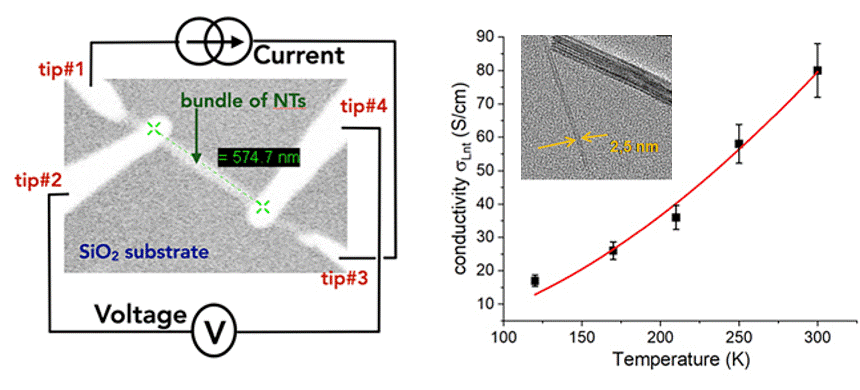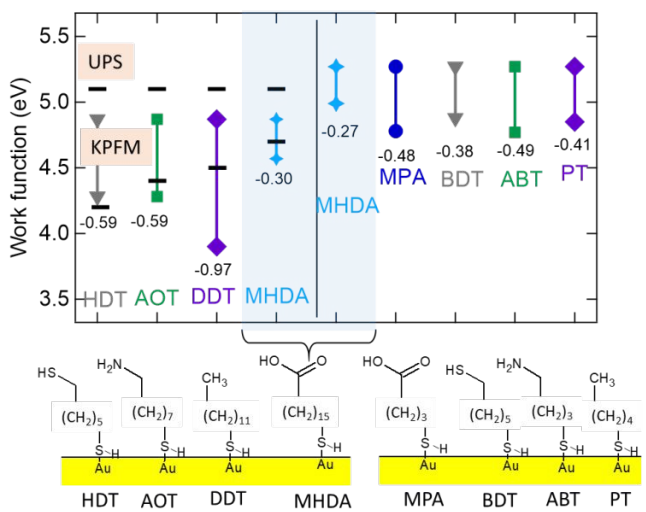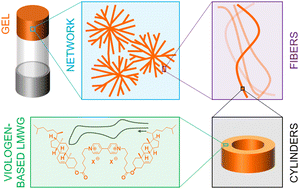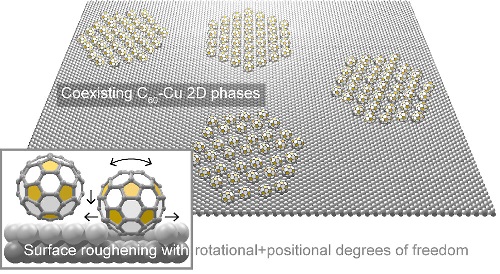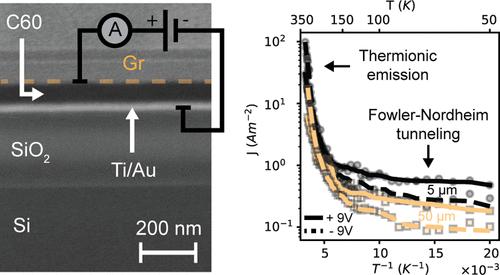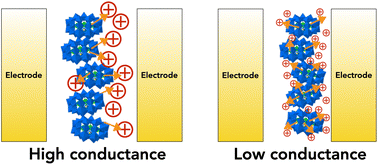publications, Réseau
Highly conductive tungsten suboxide nanotubes
We demonstrate a high electron conductivity (>102 S/cm and up to 103 S/cm) of tungsten suboxide W18O52.4−52.9 (or equivalently WO2.91−2.94) nanotubes (2–3 nm in diameter, ∼μm long). The conductivity is measured in the temperature range of 120–300 K by a four-probe scanning tunneling microscope in ultrahigh vacuum. The nanotubes are synthesized by a low-temperature and low-cost solvothermal method. They… Read More
publications, Réseau
How far the Chemistry of the Self-Assembly Monolayers on Gold Surfaces Affects their Work Function?
Self-assembled monolayers composed of various long-chain aliphatic molecules and different tail functional groups have been synthesized on the Au(111) surface and characterized by Kelvin Probe Force Microscopy and Ultraviolet Photoelectron Spectroscopy. Carboxy, amino, thio and methyl terminal groups have been considered in the design of self-assembled monolayers with different aliphatic chain lengths (from C6 to… Read More
publications, Réseau
Quantum Transport in Large-Scale Patterned Nitrogen-Doped Graphene
It has recently been demonstrated how the nitrogen dopant concentration in graphene can be controlled spatially on the nano-meter scale using a molecular mask. This technique may be used to create ballistic electron optics-like structures of high/low doping regions; for example, to focus electron beams, harnessing the quantum wave nature of the electronic propagation. Here,… Read More
publications, Réseau
Chiral and conductive viologen-based supramolecular gels exhibiting tunable charge-transfer properties
Redox-active conductive supramolecular gels involving highly ordered chiral assemblies of small organic molecules are very promising soft materials for many applications ranging from catalysis to electronics. However, combining all these properties in the same material has so far remained a difficult task. We now report the synthesis and detailed structural, rheological, and electrical characterizations of… Read More
publications, Réseau
Positional and Rotational Molecular Degrees of Freedom at a Roughened Metal–Organic Interface: The Copper–Fullerene System and Its Multiple Structural Phases
The hybrid metal–organic interaction that molecular monolayers experience when deposited on metallic substrates can compete with intermolecular interactions and produce a variety of on-surface orders. The variety is already important when the molecule/substrate interface remains atomically flat. Here, we address the case of fullerene molecules deposited at room temperature on a Cu(111) surface with interface… Read More
publications, Réseau
Hybrid molecular graphene transistor as an operando and optoelectronic platform
Lack of reproducibility hampers molecular devices integration into large-scale circuits. Thus, incorporating operando characterization can facilitate the understanding of multiple features producing disparities in different devices. In this work, we report the realization of hybrid molecular graphene field effect transistors (m-GFETs) based on 11-(Ferrocenyl)undecanethiol (FcC11SH) micro self-assembled monolayers (μSAMs) and high-quality graphene (Gr) in a… Read More
publications, Réseau
Quasi-1D Polymer Semiconductor – Diarylethene Blends: High Performance Optically Switchable Transistors
Optically switchable field-effect transistors (OSFETs) are non-volatile photonic memory devices holding a great potential for applications in optical information storage and telecommunications. Solution processing of blends of photochromic molecules and π-conjugated polymers is a low-cost protocol to integrate simultaneously optical switching and charge transport functions in large-area devices. However, the limited reversibility of the isomerization… Read More
publications, Réseau
Field and Thermal Emission Limited Charge Injection in Au–C60–Graphene van der Waals Vertical Heterostructures for Organic Electronics
Among the family of 2D materials, graphene is the ideal candidate as top or interlayer electrode for hybrid van der Waals heterostructures made of organic thin films and 2D materials due to its high conductivity and mobility and its inherent ability of forming neat interfaces without diffusing in the adjacent organic layer. Understanding the charge… Read More
publications, Réseau
Experimental observation of the role of countercations in modulating the electrical conductance of Preyssler-type polyoxometalate nanodevices
Polyoxometalates are nanoscale molecular oxides with promising properties that are currently explored for molecule-based memory devices. In this work, we synthesize a series of Preyssler polyoxometalates (POMs), [Na⊂P5W30O110]14−, stabilized with four different counterions, H+, K+, NH4+, and tetrabutylammonium (TBA+). We study the electron transport properties at the nanoscale (conductive atomic force microscopy, C-AFM) of molecular… Read More
publications, Réseau
Manipulation of the magnetic state of a porphyrin-based molecule on gold: From Kondo to quantum nanomagnet via the charge fluctuation regime
By moving individual Fe-porphyrin-based molecules with the tip of a scanning tunneling microscope in the vicinity of the elbow of the herringbone-reconstructed Au(111) containing a Br atom, we reversibly and continuously control their magnetic state. Several regimes are obtained experimentally and explored theoretically: from the integer spin limit, through intermediate magnetic states with renormalized magnetic… Read More

